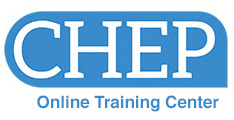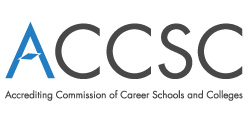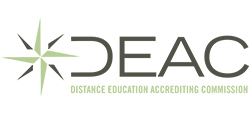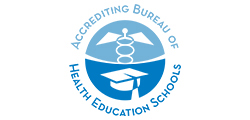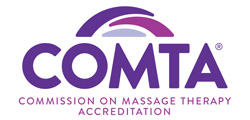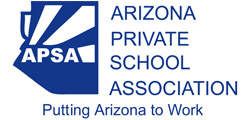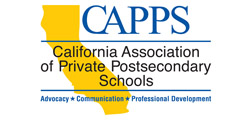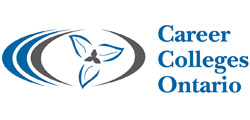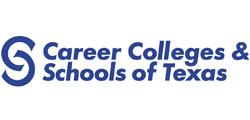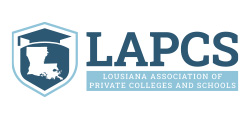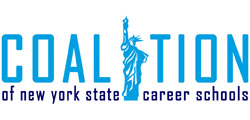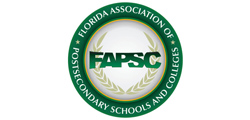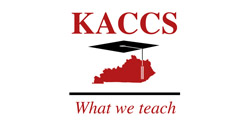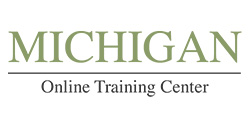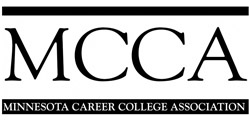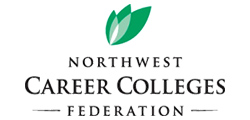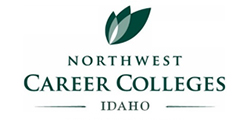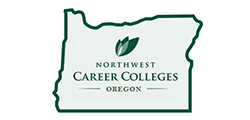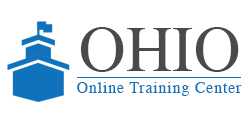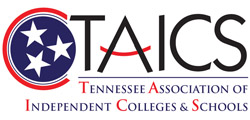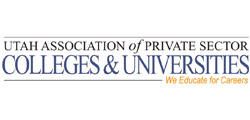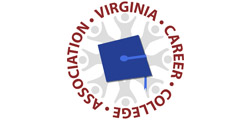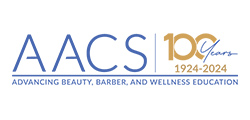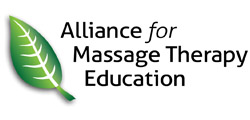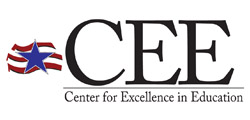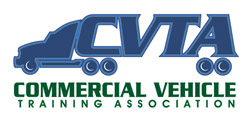Badge Evidence | Completed Courses (4 Hours Each)
ABHES101Developing a Program Effectiveness Plan (PEP)
The health care field is growing rapidly, as are the requirements for preparing individuals to enter and be successful in their chosen health care fields. To remain current with the demands of career preparation areas, colleges and universities need to have a plan of action to assess the status of programs and strategies for improving instructional offerings. This course will provide participants with a step-by-step process to complete an internal program quality assessment tool called the Program Effectiveness Plan (PEP). Resources are provided that will expand the knowledge base of participants and assist them in completing a PEP.
This course is sponsored by
Accrediting Bureau of Health Education Schools
Accrediting Bureau of Health Education Schools
AD108RBest Practices in an Ethical Enrollment Process
Ethical behavior in recruitment is essential to student and institutional success and is a crucial component of a compliant institution. This course provides a framework to evaluate your current admissions interview process and offers new tools that allow for meaningful connections with today's students. An ethical enrollment process will help your students make their own best decisions and will increase the effectiveness of your admissions personnel.
AD112Best Practices in Presenting the Value of Your Institution
Let's face it, today's students have a plethora of information at their fingertips; but can they truly understand in a meaningful way all that your school has to offer? This course takes product knowledge and presentation skills to a higher level with enhanced tools and techniques to improve your "sales" skills. Additionally, advanced methods for presenting the attributes and benefits of your institution will be explored, along with successfully addressing challenges and resources.
In this course, we will examine the fundamentals of value, benefits, and worth. In addition, we will utilize techniques and tools to prepare and present the value of your institution. Finally, we will review tips and best practices to maximize your value presentation. Once you have completed the course and activities, you will be prepared and ready to best serve your students and school with your value presentations.
In this course, we will examine the fundamentals of value, benefits, and worth. In addition, we will utilize techniques and tools to prepare and present the value of your institution. Finally, we will review tips and best practices to maximize your value presentation. Once you have completed the course and activities, you will be prepared and ready to best serve your students and school with your value presentations.
AD113Managing Your Attitude and Energy to Maximize Your Effectiveness
The most successful admissions professionals are those who maintain a positive attitude and energy, but maintaining that positivity each and every day can be tough. This course focuses on the importance of understanding and building your personal attitude and energy to maximize your effectiveness. You will have the opportunity to assess your attitude and energy and manage these elements to maximize your performance. In this course, we will examine the fundamentals of attitude and energy and understand why they are so important to your success. In addition, we will utilize assessments to look at your current attitude and energy levels. Finally, we will review tips and best practices to enhance your energy and attitude output. Once you have completed the course and activities, you will be prepared and ready to best serve your students and school by maximizing your personal attitude and energy.
AD114Adapting Your Communication for Successful Connections
Today's admissions professionals need expanded methods to adapt to where the prospective student is in the decision-making process. Whether you work with students online, face-to-face, or a little of both, adding variety will help you successfully connect with your students. In this course, you will discover ways to improve your connections with prospective students, best practices for inbound and outbound communication, how to address challenges in the moment, and methods for effective follow-up that improve your effectiveness as an admissions professional.
AD115Effective Questioning and Listening
Questioning and listening are essential elements of communication - especially when working with students. This course provides an in-depth understanding of the purpose of skillful listening, and how this is necessary to be the most effective in your position. In addition, this course provides an in-depth understanding of the purpose and types of meaningful questions. You'll be introduced to the fundamentals of both questioning and listening, as well as new tools and techniques to help you refine your questioning and listening skills.
AD200Relationship Building in the Admissions Process
The purpose of this course is to improve the relationship and dynamics between the admissions representative and prospective students to ensure an educational goal is soundly met. The relationship cycle, the importance of relationships, and the process of finalizing the enrollment are discussed.
The goal of this course is to help develop a better understanding of the topic and produce tangible resources to help implement plans, strategies, and ideas at your school. In addition to lecture videos, links to possible resources, and assessments, you will be able to utilize the Journal and Learning Activities.
CM104Compliant Interactions: Acting with Integrity
This compliance training course is designed for admissions, financial aid and career services employees of accredited institutions participating in federal financial aid programs. The course provides a clear and practical understanding of the federal regulations that govern the conduct of your institution and correspondingly underlay the performance of your job. The purpose of the course is not to train you to become a regulatory expert, but to provide the information you need to do or say the right thing when interacting with both prospective and enrolled students, as well as the consequences of doing or saying the wrong thing whether by mistake or with intent. More importantly, the course emphasizes that 'Doing the Right Thing' ensures that we provide an environment of trust where prospective students receive the information they need to make informed decisions about their education.
CM107Sustaining a Culture of Compliance: The Role of Faculty and Staff
This course is designed for either an institution's full or part time staff and faculty members. The course focuses on building and sustaining a campus-wide culture of compliance as opposed to simply providing a multitude of standards and regulations. In short, CM107 hopes to provide the information staff and faculty need to say or do the right things when interacting with both prospective and enrolled students about their education - online or face-to-face - as well as the consequences of saying or doing the wrong things whether by mistake or with intent. Components on ethics, customer service and fostering a culture of compliance in the new normal of educational delivery are also included.
CM150Understanding the Language and Intention of Accreditation Standards
In this course, using your accrediting body's criteria, you will study the language and intention of accreditation. Participants will develop a different perspective on the self-study process and an understanding of how to craft the self-study report to effectively communicate how present practices meet the standards. Discover what the standards really are and what it takes to meet them, interpret and communicate your institution's current operating practices in the context of the criteria, and develop a more accurate understanding and expression of how your institution can provide the evidence needed to demonstrate compliance.
CM251Students with Disabilities: Legal Obligations and Opportunities
This course provides faculty, staff, and administrators with an understanding of the legal mandates regarding equal access for students with disability. More importantly, it provides a practical framework to help institutional personnel know what to say and do in the context of their defined role and interactions with students with disabilities. Topics include the civil rights nature of applicable Federal law, definitional issues, the impact of disability on traditional education activities and pursuits, reasonable accommodations, and the unique responsibilities of faculty, staff, and administrators as prescribed by their position.
CS201Institutional Best Practices to Maximize Graduate Employment Outcomes
Derived from the feedback of over 100 institutions, empirical research, and case studies, course participants are presented with specific strategies and best practices that promote graduate employment. This course is for all education professionals seeking to understand the institutional practices that maximize graduate employment outcomes. Because employment outcomes are as much a function of institutional behaviors as they are of student behaviors, this course is based in systems thinking, which challenges participants to examine the interdependent relationship among institutional infrastructure, student career-readiness, and graduate employment rates.
EC115Integrating Career Readiness Into Your Courses: Part I
This course will provide an overview of career readiness including information and activities that may be incorporated into your courses. This course, which forms Part I of a two-part series, provides details about four specific career readiness skills: critical thinking/problem solving, verbal/written communications, teamwork/collaboration, and information technology applications. Additional thoughts and resources will also be provided to allow you to consider multiple ways to assist students in developing these skills in your courses.
EC116Integrating Career Readiness Into Your Courses: Part II
This course will provide a brief review of career readiness and provide additional skills to incorporate into your courses. This course is Part II of a two (2) part series of courses. Therefore, this course will provide details about four (4) additional specific career readiness skills. These skills include leadership, professionalism/work ethic, career management, and global/multicultural fluency. Further thoughts and resources will also be provided to allow instructors to consider additional ways to incorporate these skills into their courses.
ED102Student Retention Methods
The instructor is the real key to student retention at any educational institution. Instructors must keep focused on student motivation and retention each and every day of class. Developing strategies for retaining students throughout the entire training sequence is both complex and rewarding. All instructors should have the goal of seeing all of their students successfully complete their class. This course helps you reach that goal by helping you to understand your students and use proven motivation and retention techniques to keep them enrolled and engaged in the learning process.
ED144Student Empowerment for Learning Success
This course explores the different components of student empowerment and the value that it has in learning success. Student empowerment is a necessary component for students as they transition to and through postsecondary training. Content will be presented that will raise awareness of what student empowerment is and how it can enhance the learning process for students. Strategies are given for enhancing the development of student empowerment that can be implemented both online and onsite.
ED148ChatGPT and Educational Uses
This course will provide an overview of ChatGPT and how it might impact education. With an artificial intelligence (AI) language processing tool, there could be endless possibilities. However, like any other technology, its use in education is to be considered carefully, because learning will be affected. The course begins with an overview of the history of chatbots and artificial intelligence and goes on to discuss how to use ChatGPT, how teachers and students may use it, and the advantages and disadvantages of its use.
ED205Enhancing Students' Professional Skills
Awareness has grown in recent years that, to be effective today, learning must include more than knowledge and "hard skills," or technical ability. In a world where work is often team-based and project-driven, teaching needs also to encompass attitudes and social competencies. This course will describe ways students can enhance their professional skills across the curriculum. Strategies for teaching effective personal interaction and ways to support student professional growth and development will be discussed. This course will also explain how students can improve their writing skills and computer literacy across the curriculum.
ED207Outside the Classroom: Experiential Learning
Experiential learning is intended to extend students' educational experience beyond the traditional classroom setting. It is a structured, student-centered way to integrate curriculum-based educational experiences utilizing practical applications and active involvement. This course discusses strategies for extending the curriculum into the workplace. Information is provided on how to educate the internship site and how to create useful forms and processes for documenting and implementing successful internships. This course describes the different roles of the institution, the student, and the internship site. It will identify ways to supervise students, as well as ways to evaluate and assess student success at internship sites.
ED208Adult Learning Theories
When designing instruction for adult learners, it's important to consider a host of factors. This course describes the characteristics and motivations of adult learners, and the best practices and techniques for teaching them. It discusses the different theories of adult development and adult learning, and their relationships to the classroom experience. In addition, this course examines brain-based teaching strategies, the theory of multiple intelligences, and how the different parts of the brain are affected by new learning.
ED402Fostering Soft Skills in the Classroom I
This class will review communication, collaboration, and time management soft skills that can be instilled to help a student excel not only in the classroom, but also on the job. A variety of ideas and methods to implement the growth of those soft skills will also be shared in the course. Learning content is only part of the goal to empower students and graduates to be attractive to potential employers. The human side of the business world - the people - is what makes a company great, so it is imperative to foster the learning of both content and soft skills as students travel on their educational path to a job and career.
ED403Fostering Soft Skills in the Classroom II
This class will review adaptability, problem solving, conflict resolution, self-motivation, and feedback soft skills that can be instilled to help a student excel not only in the classroom, but also on the job. A variety of ideas and methods to implement the growth of those soft skills will also be shared in the course. Learning the content is only part of the goal to empower the students and graduates to be attractive to potential employers. The human side of the business world—the people—is what makes a company great, so it is imperative to foster the learning of both content and soft skills as students travel on their educational path to a job and career.
ED409Gamification in the Classroom
This course will explore the field of gamification and the way that gaming and gaming elements have come to impact our everyday lives, and can improve our courses. Focusing on easy-to-implement concepts, this course will help you to begin utilizing gamification elements to increase learner engagement and motivation, and increase overall student success.
The goal of this course is to help develop a better understanding of the topic and produce tangible resources to help implement plans, strategies, and ideas at your school. In addition to lecture videos, possible resource links, and assessments, you will be able to utilize the Journal and Learning Activities.
ED410Increasing Student Retention by Flipping the Classroom
The Flipped Classroom model has become one of the most commonly implemented educational models seen in classrooms today. Through this course, we will explore the basics of the flipped classroom, how and why it works to increase student retention, and go over steps to start incorporating flipped classroom elements in your courses.
The goal of this course is to help develop a better understanding of the topic and produce tangible resources to help implement plans, strategies, and ideas at your school. In addition to lecture videos, possible resource links, and assessments, you will be able to utilize the Journal and Learning Activities.
FA230Financial Aid Management - Compliance without Compromise
With a seemingly endless stream of new laws and regulations, institutions have become burdened with ensuring they are compliant, while continuing to give great customer service to their students and families and all while achieving larger institutional goals. The role of the Financial Aid Office in compliance cannot be underestimated, but the Director of Financial Aid cannot ensure compliance in a vacuum.
This course is designed to examine the fundamentals of law and regulation, and of the enforcement process. More importantly, this course provides tools for School Directors, Chief Financial Officers, Enrollment Managers, and Financial Aid staff to develop and build compliant practices that don't interfere with effective operations, customer service or institutional goals.
FA231Regulatory Compliance - Outside the Financial Aid Office
This course will help participants to interpret the many rules and regulations that are required by educational institutions offering Title IV funding. It will aid in preparing management and faculty in recognizing that compliance is the responsibility of the entire institution and is not just the job of the Financial Aid Office. Course content will also aid the individual in building a "culture of compliance" which will encourage teamwork and secure the cooperation of others on campus.
LS101RDo You Manage Or Lead?
This course explores the critical differences between management and leadership. Participants will be introduced to definitions and myths about each area as well as how management and leadership must coexist for an organization to operate effectively. Participants will explore their own management/leadership tendencies through exercises to see leadership and management in action.
LS102How Do You Lead?
Not everyone is suited for, or desires, a leadership position. One of the first steps to being an effective leader is to understand the desire to lead in the first place. Participants will explore their motivation to lead and develop a deeper understanding of their leader style(s).
LS103RYour Leadership Impact
To improve your impact and effectiveness as a leader, you must not only understand the role of a leader, but you must also take into consideration the followers and the situation. This course defines leadership impact and explores the interactional framework for leadership.
LS104RYour Leadership Legacy
The higher education industry provides a wealth of opportunities and challenges for those seeking leadership positions. In this course, participants will gain a deeper understanding of the higher education sector and themselves. The importance of higher education institutions will be explored along with developing a personal leadership legacy.
LS105RYour Leadership Toolkit
Get ready to add a number of skills to your toolkit as you develop as a leader! This course focuses on increased self-awareness in communication styles and learning; developing deeper understanding through empathic listening; and motivating through innovation.
LS106This Way to Leadership
This course provides you with a framework to put your self-discovery and learning into a workable plan to further develop your leadership skills. A step-by-step process is offered to help you create a meaningful Personal Leadership Development Plan (PLDP) complete with the development of SMART Goals and advice from some of today's leaders in the higher education sector.
ML118Coaching Skills
In this course, you will learn how to strengthen your coaching skills by using a four-step process to facilitate the professional growth of the employees you coach.
ML145Process Improvement
In this course, you will learn what business processes are, why improving them is essential, and how to carry out a business process improvement (BPI) initiative.
ML148Strategic Thinking
This course provides practical advice for managers in charge of shaping and executing organizational strategy. The course includes tips for analyzing opportunities, challenges, and the potential consequences of high-level action plans. It also addresses identification of broad patterns and trends, creative thinking, analysis of complex information, and prioritization of actions.
ML149Strategy Planning & Execution
In many educational institutions, corporate executives and campus management are involved in the strategic planning process. This ensures that organizational strategies - both corporate and campus level - are tightly aligned and that successful implementation can follow. In this course, you will learn what strategy is, how senior management and units work together to develop strategy, and how units support an organizational strategy by developing and executing action plans for strategic initiatives.
ML152Leading with Generative AI
Generative AI is reshaping industries and transforming how we work. Discover how to use it to drive innovation and enhance efficiency while confidently guiding your team through an ever-evolving landscape.
OP105Developing a Five-year Plan for Your Educational Institution
What will your institution look like in five years? Growth takes change and the commitment of the stakeholders in your organization. A five-year plan is essential for any owner or director of an educational institution, no matter how long they have been in the business. It includes various elements such as your enrollment goals for all programs, plans for new programs, new profit center potential, fees and all financial aid opportunities, enhancement of student services, faculty and staff planning, marketing and development strategies, and planning for physical space to support your expansion goals. Also, development plans are often needed to satisfy licensing and accreditation requirements.
This course covers the essential components and techniques involved in developing a comprehensive five-year plan. We will show you an effective step-by-step planning process that involves the participation of representatives from your institution including staff, instructors, students, graduates, and the employers who hire your graduates. The process encourages participants to share their knowledge and ideas, and everyone who participates in the process ultimately becomes a stakeholder in making the plan work. The course includes planning worksheets that you can download and use to help you develop your institution’s five-year plan.
OP106Developing New Programs: Research and Selection
Educational institutions need to be aware of emerging employment opportunities in new and expanding fields if they are going to continue to attract students. Most licensing and accrediting agencies ask an institution for some form of feasibility study when submitting new program-add applications. The research involved in this step often requires proof of need for the program, number of anticipated job openings, and input from employers. This course outlines ways to collect data to make an effective decision and show regulatory agencies proof of employment opportunities. Step-by-step directions are included to assist institution staff in conducting effective research and preparation of curriculum to meet employer specifications.
OP110Developing Effective Advisory and Governing Boards
Vital advisory and governing boards create additional opportunities to enhance operations within an educational institution. Well-prepared board members engaged in appropriate and timely activities can make a substantial contribution to operational, financial and management success. Creating, managing and maintaining effective advisory and governing boards can be a demanding yet rewarding process. Board members have to be identified, recruited, and trained to be effective and to understand their role as individual contributors and as members of a group of advisors. To gain maximum leverage from a board, members must also remain motivated and retain a concentrated focus on the institution's mission, purpose and goals. This course will provide a blueprint, with accompanying checklists, for establishing and maintaining effective advisory and governing boards in an educational institution.
OP115RHiring the Right Faculty for Your Institution
This course shows you how to hire high-quality instructors and orient them to your institution. The skills also apply to hiring staff. It's easy to hire someone to do a job. But it can be difficult to hire the right person. You want instructors who are top notch. They represent your institution and interact with the most people at your campus and particularly your students. This course starts with how to determine exactly what type of people you need as your instructors. Then it shows you how to recruit and hire them. Once hired, you'll learn how to introduce them to the working environment at your institution. By the time you finish this course, you'll be recruiting, hiring, and orienting quality instructors. You'll see results in improved enrollments, student achievement, retention, and completion.
OP121Managing Online Faculty at a Distance
It is no longer news that predictive learning analytics are changing online classroom instruction. This course teaches current trends in locating, hiring, monitoring and retaining the best professionals that specialize in online instruction. More importantly, this course provides insights for using the new predictive analytic approaches to optimize management of online faculty. Generalized "best practices" are waning in favor of real-time monitoring for individualized qualitative and quantitative analyses. This real-time approach provides significantly increased student success and retention. Also addressed in the course is how to build a strong faculty management team, continuing faculty development recommendations and various business considerations.
RT101Improving Retention through Timely Intervention
How many times have we said “if we’d only known” as a student walks out the door? No one starts classes planning to fail, but unfortunately problems do arise that present barriers to success. Students are good at identifying these problems blocking their path to success, but they frequently don’t have adequate problem solving and communication skills needed to overcome these problems. This course looks at the effect of stress on attrition, the use of tools to identify and help students at risk, and how to develop an institutional culture that shares responsibility for student success across the entire organization.
RT103Implementing Successful Student Retention Strategies
Owners and directors of educational institutions are always looking for the magical ingredients to improve student retention. There are at least six easy-to-implement retention strategies that can make a difference in whether a student graduates or drops out. These include efficient admissions procedures, great orientation programs, effective mentoring, student friendly classroom involvement, fabulous graduations, and successful placement. Upon completion of this course, participants will have specific easy-to-implement retention strategies to put in place for every area of their institution.
RT104Best Practices to Enhance Student Retention
This course is a collection of ideas and best practices drawn from the implementation of enrollment growth strategies at over 300 educational institutions nationwide. The course is based on a highly successful in-service training program offered by Dr. Joe Pace, Managing Partner of The Pacific Institute and includes video delivery of Pace's presentations. Filled with practical tips and suggestions, the course also discusses the application of current research results on human behavior and organizational culture to enhance student enrollment and retention. This is a unique course that will dramatically change your perspective on institutional effectiveness.




